| 1 | Venezuelan lancehead |
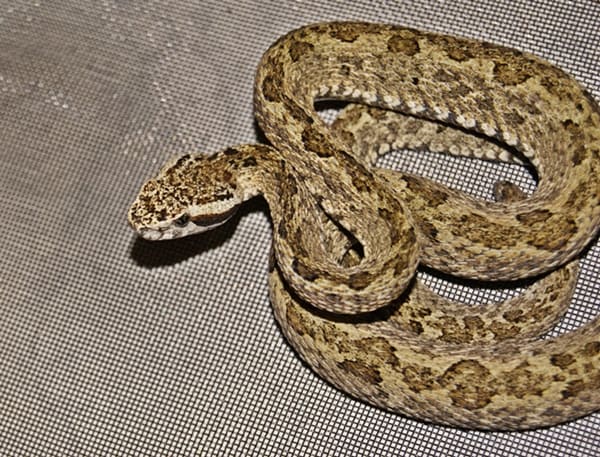
The Bothrops lancehead genus is one of the largest groups of venomous snakes in the Americas, with at least 48 members as of 2024. The fer-de-lance is the deadliest, and the jararaca is infamous for stalking São Paulo, but the group is full of all sorts of interesting minor characters.
The Venezuelan lancehead (Bothrops venezuelensis) appears in both Colombia and Venezuela, where it causes a large amount of bites every year. This species reaches a maximum of 166.7cm, and according to folklore, it’s unusually aggressive, explaining the local name of tigra mariposa. This is a venomous snake of moist forests, including lower montane forest and cloud forest.
Venezuelan lancehead venom is highly variable by region, according to a 2018 study, which gathered samples from five localities in Venezuela itself. The venom from Lagunetica had the weakest LD50 score (16.2mg), while those from La Boyera had the strongest, at 4.4mg. Both of those are far weaker than a common lancehead, at 0.35mg.
Bothrops venezuelensis isn’t especially lethal compared to its relatives, as victims usually survive. But this Venezuelan serpent is still a mortal foe which you would be very wise to avoid. Local symptoms include swelling, severe pain, blisters, necrosis and compartment syndrome. Systematic symptoms include spontaneous bleeding, including from the gums, as well as the nose.
Young Venezuelan lanceheads are just as dangerous as adults, as evidenced by a 16 year old boy who was bitten by a captive juvenile, and ended up spending 16 days in hospital.
| 2 | Martinique lancehead |
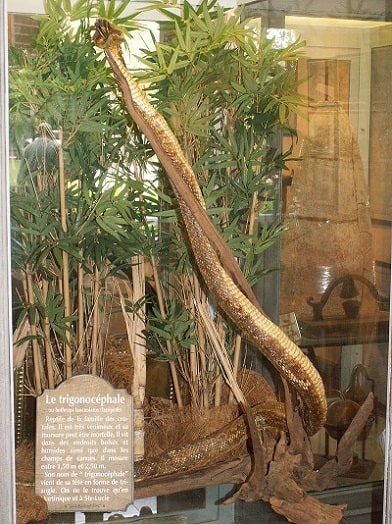
One of two Bothrops lanceheads to have jumped to the Caribbean, the other being the San Lucia lancehead. Martinique lanceheads are found solely on their namesake island, located just off the northern Venezuelan coast. How they arrived there is still being debated. They may have swam, become stranded after sea levels fell, or according to one disproven theory, been released by warring Indian Caribs, seeking to displace the native Arawaks.
Either way, Martinique lanceheads are one of the longest lanceheads, at a maximum of 200cm. Their venom also has rare deadly abilities, as it combines traditional necrosis with an ability to trigger heart attacks. Deep vein thrombosis is another of their specialties. Amputations are common with Martinique lanceheads, and according to local superstition, their fangs possess enough venom to cause an entire crop field to wither and die.
Martinique lanceheads (Bothrops lanceolatus) avoid urban areas, and are particularly common in sparse woodlands, and crop fields such as banana plantations. They feast on rodents, and with the tightly confined island of Martinique developing rapidly, they’re now seriously endangered.
| 3 | Barnett’s lancehead |
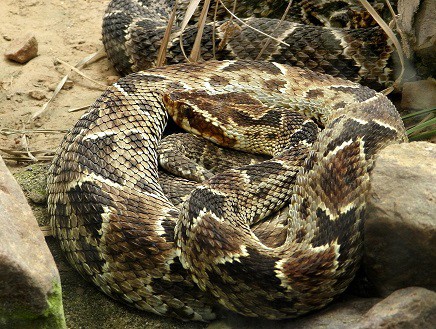
This pitviper is found exclusively in western Peru, where it inhabits arid semi-deserts and dry savannah woodlands next to rivers. Barnett’s lancehead (Bothrops barnetti) reaches a maximum of 140cm, and is a common cause of snakebite among local herdsman and children exploring from nearby villages.
This species has several unique toxins in its venom, such as barnettlysin-I. Like most lanceheads, Barnett’s lancehead produces very few neurotoxins. Its venom mixture consists of 74.1% metalloproteinases, 6.7% serine proteases and 6.3% phospholipases.
Overall, this Peruvian pitviper specialises in blood chaos, but with a twist. It has the characteristic of completely disabling blood clotting, but causing little spontaneous haemorrhaging around the body. Its venom belongs to the slightly milder P-1B subset of vipers, which also contains the white-tailed lancehead. Essentially, its venom complete destroys fibrinogen and thrombin, the backbone of blood clotting, while causing very little damage to the lining of blood vessels. Class P-1A, which causes both, contains such vicious vipers as the Chinese moccasin and common lancehead (Bothrops atrox).
Despite an aggressive facial expression, Barnett’s lancehead is a moderate to quiet species in captivity. They’re recognisable by their triangular patterns, with a glowing white outline surrounding each dark marking. Living to the west of the Andes, Barnett’s lancehead has no overlap with the common lancehead.
| 4 | Speckled forest pitviper |
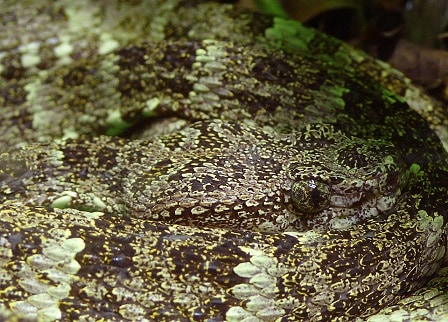
A tree-dwelling pitviper found across most of the vast Amazon rainforest region. The speckled forest pitviper (Bothrops taenitus) is particularly concentrated in eastern Ecuador, and reaches a maximum of 174.5cm, with an average of 100-150cm. With its mossy jungle patterns, and neon fungi blotches, this species is simple to distinguish from its ground-dwelling relatives like the common lancehead (Bothrops atrox).
Speckled forest pitvipers aren’t renowned for their aggression, and with their love of rainforests, people in urban Brazil will never come to face to face with one. Its venom has an LD50 lethality rating of just 4.5mg, versus 2mg for a cottonmouth, and no deaths are confirmed. However, their venom is severely cytotoxic, and of the two documented bites on record, one resulted in amputation. The other caused severe swelling of the entire bitten arm. Bothrops taeniatus is nocturnal, and is particularly active on nights following warm days.
Speckled forest pitvipers have a particularly thin body to enable their branch-dwelling ways. They’re capable of ascending high into the canopies, and their confirmed prey include rodents and reptiles such as keel-bellied shade lizards. One cool feature is that their eye patterns closely match their scales, to aid their camouflage (see above).
| 5 | Marbled lancehead |
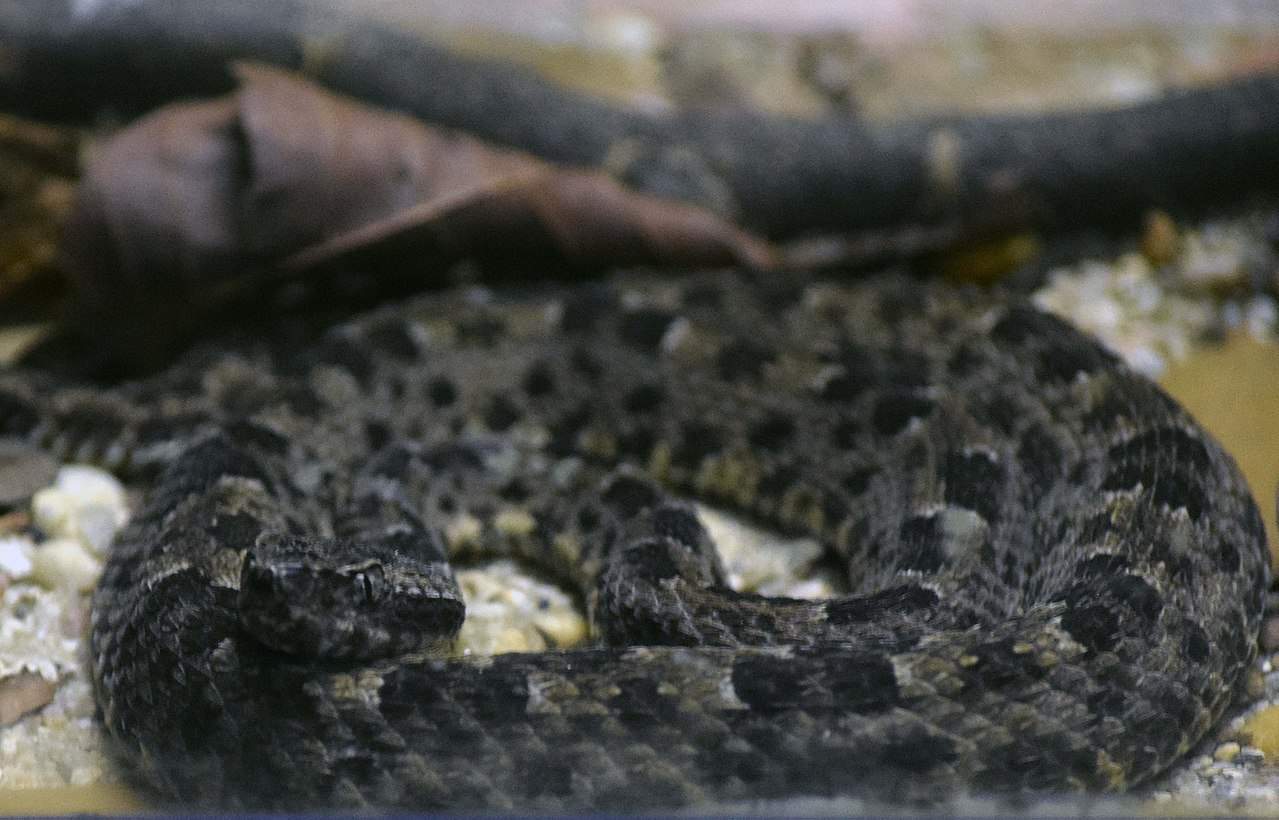
One of the shorter lancehead species, at a maximum of just 80cm. This venomous pitviper is found in only three eastern Brazilian states: Minas Gerais, Goiás and Tocantins. This is a heavily nocturnal lancehead, which moves most commonly from 18:00-20:59, and to a lesser extent from 21:00 to midnight. Marbled lanceheads (Bothrops marmoratus) virtually never move during midday, and mainly stick to the ground rather than climbing trees.
Rather than thick forests, marbled lanceheads are a creature of open cerrado savannah, with clumps of dry trees and rolling wispy grassland. They cover a small amount of Brazil, but can be extremely common in certain locations. A survey of snakes in Brazil’s Chapada dos Veadeiros National Park found them to be the most common snake, followed by the false coral snake (Oxyrhopus trigeminus). Their relative Bothrops moojeni was the fourth most common snake.
Marbled pitvipers are most closely related to Neuwied’s pitviper (Bothrops neuwiedi), and was originally one of its subspecies, before being recognised as independent in 2008. Marbled lanceheads vary widely in colour, even within a single location. Black and grey is possible, like above, but so are beige and brown colours like a giraffe.
| 6 | Bothrops monsignifer |
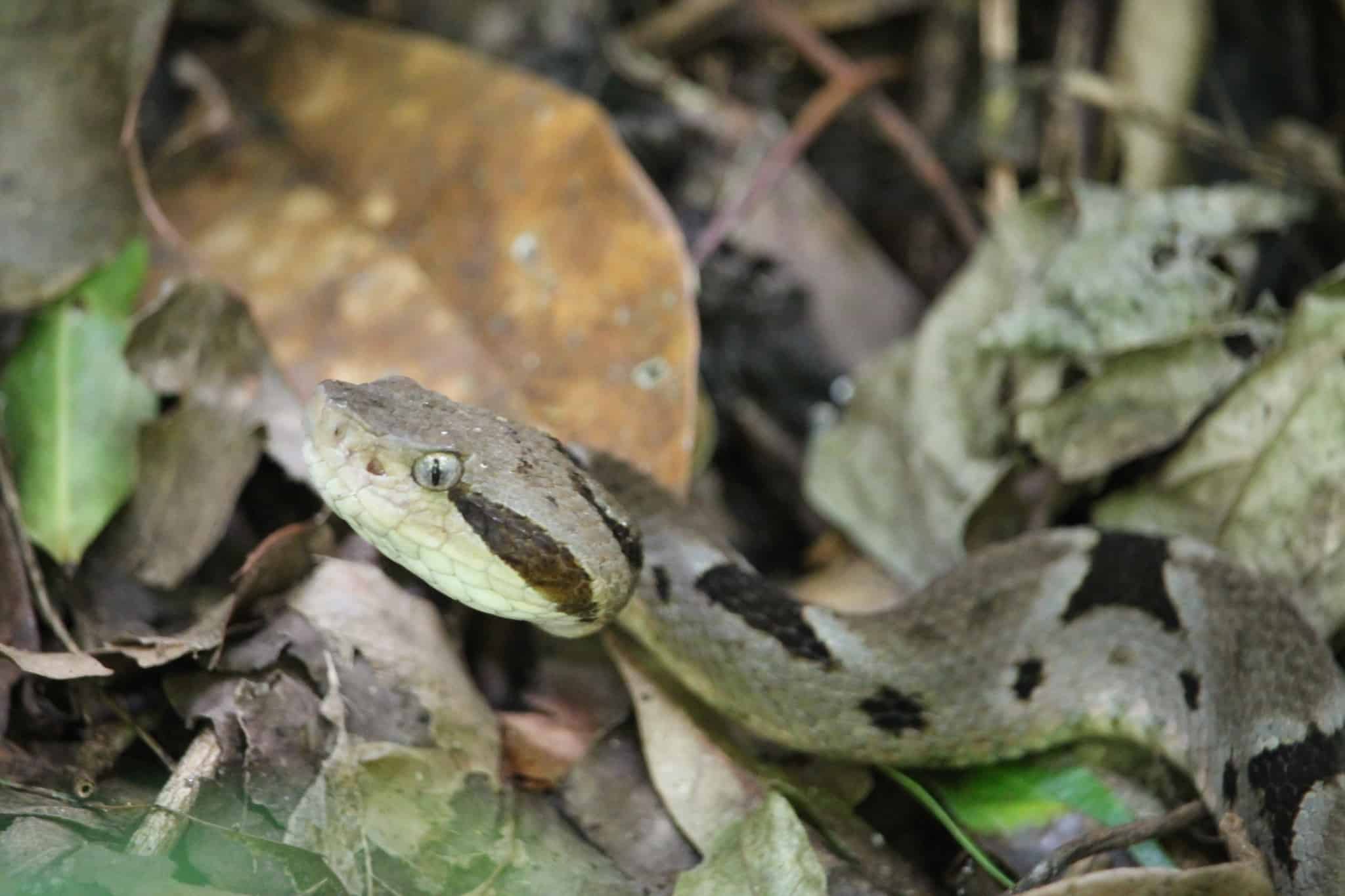
A new species, which technically isn’t new at all (probably evolving at least a million years ago), but was first identified by scientists in 2019. Bothrops monsignifer lives in Peru and Bolivia, on the eastern slopes of the Andes, at altitudes of 890–2133 metres. This is a forest species which reaches at least 164cm in length, and is primarily grey in colour.
The name Monsignifer is derived from the Latin words Mons for “fire” and signifer for mountain. This references where it was first discovered: the Refugio Los Volcanes in Santa Cruz department, Bolivia.
Bothrops monsignifer turned out to be a very rare species. In the initial study, scientists searched the refuge for 3 weeks, and only discovered four individuals. Meanwhile, they came across 12 Andean pitvipers (Bothrocophias andianus). These two species coexist in Bolivia, but occupy subtly different habitats. Bothrops monsignifer was found in less humid forests, with fewer large trees and greater sunlight exposure, while the Andean pitviper preferred darker, very humid and overgrown forests.
Bothrops monsignifer normally sticks to the ground, but still possesses tree-climbing skills, as they’ve been spotted 1.4 metres high in a magnolia tree before. The original study found evidence of rodent consumption, and a captive female once gave birth to 18 live young, 2 dead and 16 alive.
| 7 | Pampas lancehead |
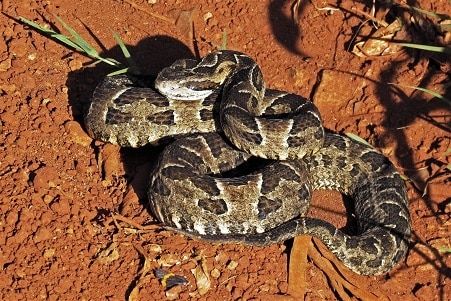
This Bothrops pitviper is found in extreme southern Brazil, in the state of Rio Grande as well as eastern Uruguay. This is a species of forests and forest edges, where they wait menacingly in a mosaic mixture of alternating light and shadows, which blends perfectly with their light and dark patterns.
Pampas lanceheads are commonly found on the borders of agricultural areas, but avoid open grassland. They also appear on the edges of rural houses. Though they prefer forests, they’re not a rainforest addict; they can survive in degraded forests heavily disturbed by mankind.
With symptoms like swelling and spontaneous bleeding, Bothrops pubescens has a normal venom for its family, but this is not a snake to underestimate. Its venom contains 14 toxin families, with at least 89 individual proteins.
According to a 2009 study, their diet consists of 56.2% small mammals, 21.2% frogs and toads, 7.5% lizards, and 7.5% fellow snakes. The Amazon false coral snake (Oxyrhopus rhombifer) is one of their confirmed prey. Pampas lanceheads reach up to 120cm, have a particular liking for leaf litter, and mainly stick to the ground rather than climbing trees.
| 8 | Mato Grosso Lancehead |
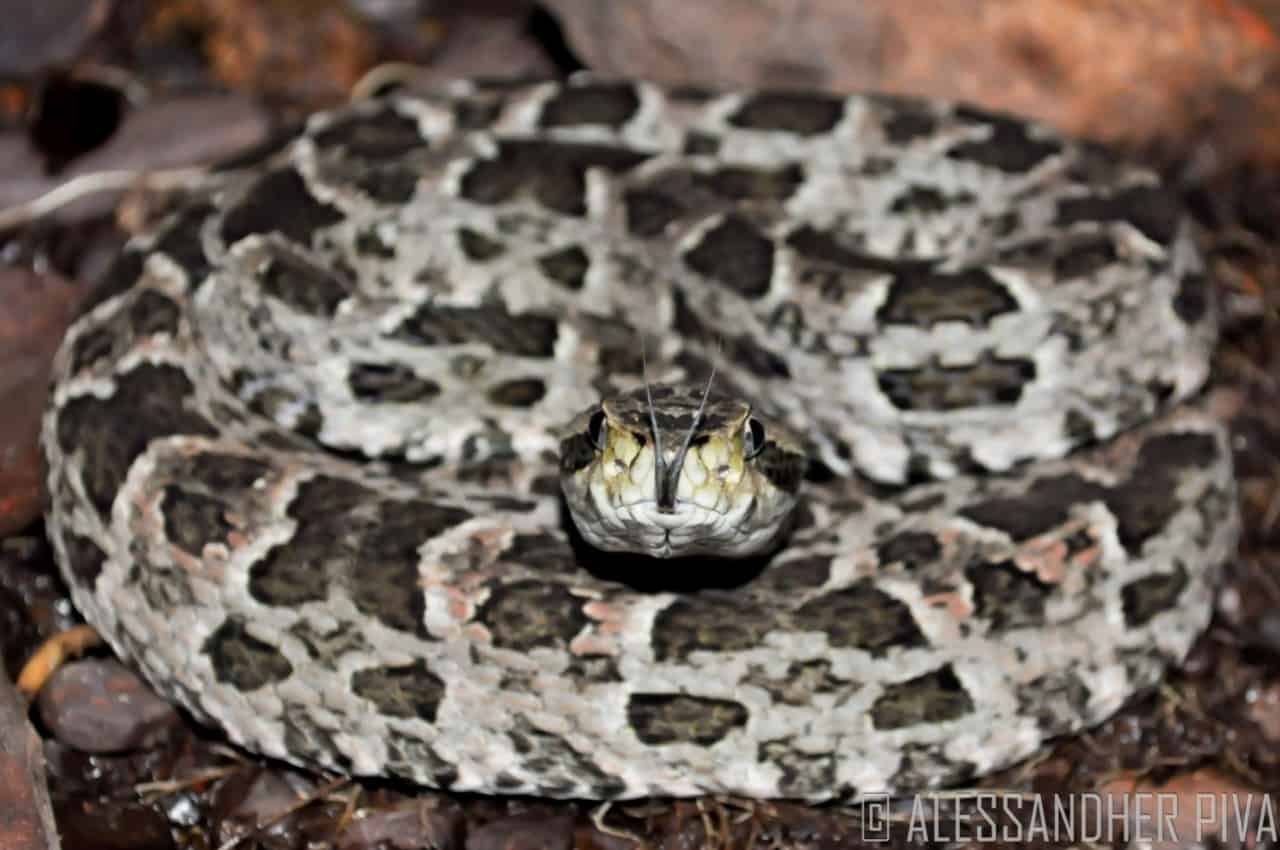
A grey-black coloured pitviper of southwest Brazil, which also appears in most of Bolivia. This species reaches a maximum of 130cm (so far anyway), and is just as dangerous as its cousins.
Instead of thick forests or sweeping savannah, the Mato Grosso lancehead (Bothrops mattogrossensis) is a species of wide open wetlands (Pantanal). They’re particularly common in wet grassland intermingled with rivers and standing water bodies like ponds, where they hunt for frogs such as Cei’s white-lipped frog. These wetlands flood each year during wet season, and when the water rises to dangerous levels, Bothrops mattogrossensis instinctively climbs branches to reach a point of safety. Though not a full tree climber, they have a relatively slender body, allowing them to escape floods at will.
According to a detailed 2014 study, Mato Grosso lanceheads possess a typical venom for a Bothrops pitviper: a mixture of cytotoxins, metalloproteinases, and phospholipids, which cause severe swelling, haemorrhaging and necrosis. There were few neurotoxins, but three unique myotoxins were identified called BmatTX-I, BmatTX-II, and BmatTX-III, which selectively destroy muscle tissue. Like the marbled pitviper in Brazil’s east, the Mato Grosso lancehead is a former Neuwied’s pitviper subspecies which was split off and made independent.
| 9 | Jonathan’s lancehead |
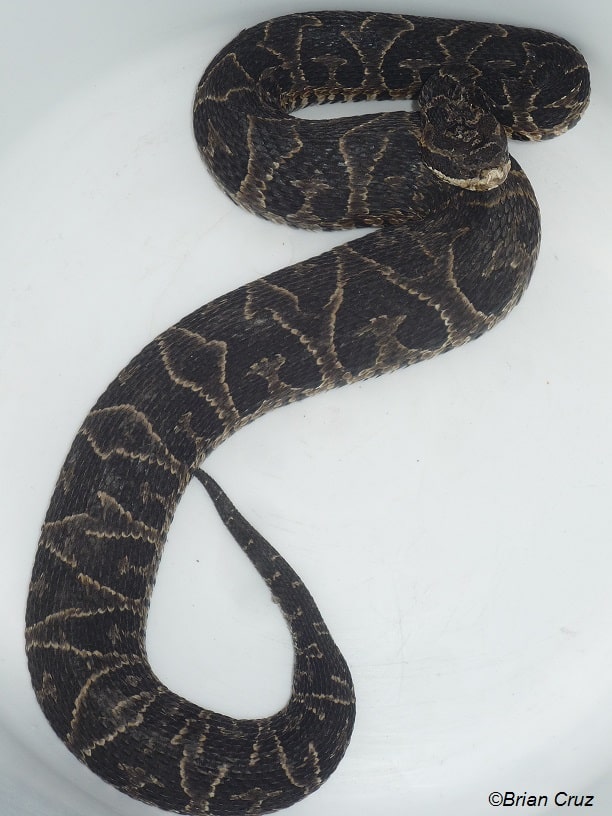
One of the highest climbers of the Bothrops lancehead clan. Jonathan’s pitviper (Bothrops jonathani) is a creature of the southern third of the Andes, including Bolivia and far northwest Argentina. They reach a maximum of 88.1cm, and are a relatively dark species, with a combination of medium brown, dark chocolatey brown and subtle white lines. One of these white lines travels along their upper lip, contrasting vividly with their brown face.
While some pitvipers lie to west of the Andes and others to the east, this is a rare Bothrops member to live in the mountains themselves. Jonathan’s pitviper reaches very high altitudes, having been recorded at 3220 metres above sea level, the second highest within the entire genus, only falling short of Bothrops ammodytes, which can reach 3700 metres in Argentina.
One of Bothrops jonathani’s most recognisable features is an upturned nose. This species isn’t rare, but is rarely encountered by people due to their remote habitats. While research is lacking, several Jonathan’s pitvipers were found in open, rocky areas, interspersed with shrubs and cacti up to 6 metres tall. One was found in a rock crevice shaded by a tree, and another vibrated its tail against a leaf bed in a clear mimic of a rattlesnake’s rattle. Their closest relative is the crossed pitviper of southern Brazil.
| 10 | Green black lancehead |
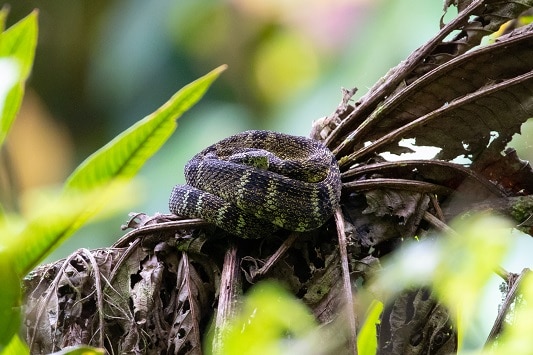
This species lives in a narrow slice of Peru and Bolivia, mainly on the eastern slopes of the Andes, in dense mountain forests which few city dwellers ever tread to. Green-black lanceheads (Bothrops chloromelas) are mainly found at between 1000-2000 metres above sea level, particularly in primary rainforest untouched by mankind. Birds are terrified of this snake, and will making a squawking ruckus the moment they spot it.
This is a rare member of the Bothrops genus to be fully arboreal, or tree-dwelling. With Bothrops having 45+ members, this is part of a small arboreal subgroup containing 5 or 6 members. These are united by their flashier, more jungle-coloured patterns, with the most common member being the fully green Bothrops bilineatus, which is known to reach 20 metres above ground. Of these, the green-black lancehead’s closest relative (and of any snake) is Bothrops oligolepis, also found in Peru.
The picture above is standard for Bothrops chloromelas, but some individuals are far more colourful, with yellow or blue shades like a fluorescent forest moss growing from their scales. The maximum known length of this species is 100cm.
